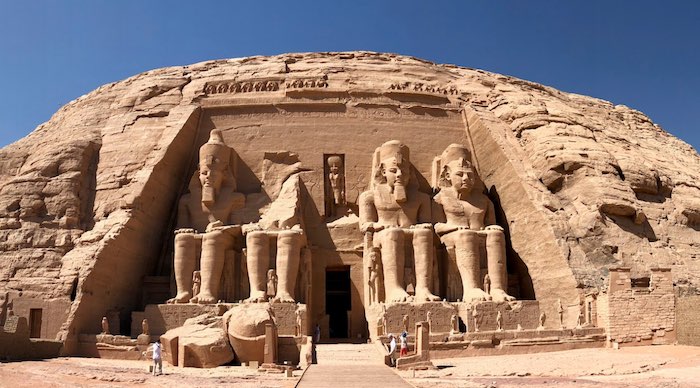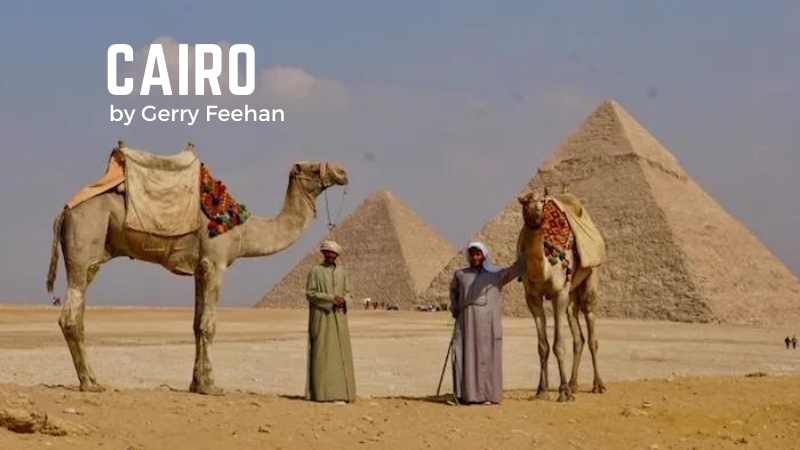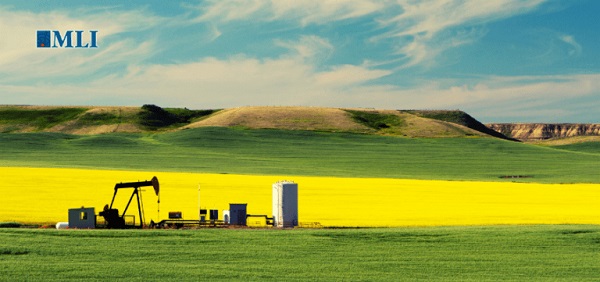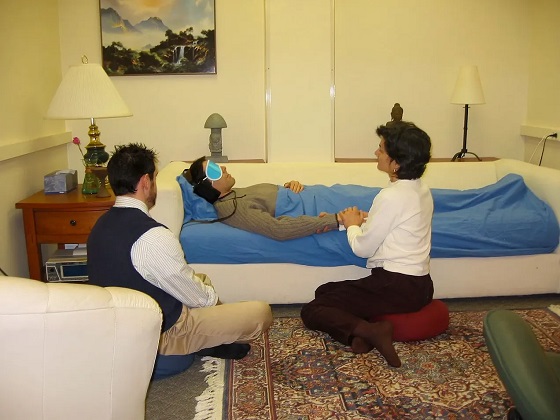Gerry Feehan
On top of the world with Gerry Feehan

Fisher Peak by Gerry Feehan

Taunting the Temptress
Once in a blue moon something improbable occurs. A goal beyond expectations and beyond the capacity of aging knees is accomplished.

Once in a Blue Moon
The view of Fisher Peak from our Kimberley condo is mesmerizing. For years I’ve gazed across the Rocky Mountain Trench at that daunting, taunting pinnacle. Fisher dominates the skyline in this range of the Rockies. At nearly 3000 meters it towers over its lofty neighbors.
Last July my brother Pat and I watched the second full moon of the month, a blue one, rise over Fisher and decided, “Let’s do it.”

The start of a long climb!
Good weather is critical to mountain climbing. Luckily, the forecast was ideal: clear skies and calm winds. An alpine storm even in summer can necessitate an overnight bivouac. We were not equipped for that nasty contingency. (An aside. Have you noticed the weatherman has become markedly more reliable over the last few years?).
As predicted a perfect day greeted our early start. Climbing Fisher requires no mountaineering equipment, no technical skills. But it’s a long drive to the remote trailhead and the sheer, steady steepness of the climb – and the equally grueling descent – make for a long, hard day. From trailhead to summit the elevation gain is 1400 meters. That’s nearly a vertical mile!

tarn at the halfway point
The hike began unfortuitously. When Patrick donned his daypack, the water reservoir was empty – and his pack was sopping wet. A leaky start. It is imprudent to begin a seven-hour climb on a hot summer day without H2O but we had little option. We’d driven an hour up bumpy logging roads to reach the trailhead. Returning to get water meant we would not have time to complete the ascent. Besides, we were in the mountains. That’s where water comes from. Find a stream, fill up – and beaver fever be damned.

Prayer flags adorn the saddle
The upward march began in a shaded forest of conifers. After an hour patches of light started to shine through the canopy and the trail opened across a jumble of rocks. Beneath our feet we heard gurgling, the babbling of an invisible creek. The steepness continued as the path skirted a cascading waterfall, the source of the hidden rumbling – and the source of clean, beautiful liquid sustenance.

What goes up …
After ninety minutes of relentless climbing, the trail leveled and we came upon a beautiful alpine tarn, its crystal clear waters mirroring the jagged peaks enveloping us. Above the small lake a cirque opened up and we had our first clear view of Fisher, the temptress, still hundreds of meters above us. A solitary marmot whistled a warning call. The sound echoed loudly off the walls of the rocky amphitheater.

… must come down
We were halfway to the summit.
The next leg of the assault is difficult: three hundred vertical meters of steep, loose scree. A real b#&ch! Even with foreshortened hiking poles digging firm, two hard-earned forward steps were countered by a slippery step backward. The scree section is also dangerous. As it steepens, the risk of lost footing and a fall increases. And, worse still, a hiker above can dislodge rocks upon those below. Self-preservation dictates that you want to be in the lead. Unfortunately, Pat is fitter, stronger and younger than I. So, lagging behind, my focus was keeping my head up while keeping my head down.
Did I mention the scree was a real b#&ch!
After an hour the loose slope resolves to a saddle – a safe refuge before the final climb to the top. This notch in the mountain is festooned with prayer flags. We took a breather in the thin air and gazed around. We had equaled the height of the nearby Steeples. Dibble Glacier, a remnant of the last ice age is visible from this vantage, its ancient blue-grey mass cupped within the Steeples.
The last section begins innocuously with a well-marked switchback through ever-bigger rocks. But soon these boulders become broken, vertical slabs. We abandoned our hiking poles, which became a liability in the four-limbed scramble up, over and around truck-sized stones. Clinging precariously to handholds and squeezing through narrow fissures, we neared the top. In a few spots only a tiny foothold marked the difference between moving safely upward or making a quick 1000-meter descent. But for us Feehans this is the fun part.
The top of Fisher is as tiny as it appears from our balcony 30 kilometers away: a small platform with room for just a handful of climbers. I’m not sure what I expected at the peak but was surprised to see just a jumble of huge boulders stacked atop one another, like the playthings of a giant. The view from the top is remarkable. 360 degrees of pure horizon. To the north and east an endless ocean of mountain peaks. To the south the blue meandering waters of the Kootenay River and Koocanusa Lake disappearing into the United States a hazy hundred kilometers away. In the west, directly below us, lay the verdant green fields of the Rocky Mountain Trench. Further distant the bare ski runs of Northstar Mountain stood out clear as day. I could see my deck over there in Kimberley. No, I couldn’t.

Gerry at the top.
The difficulty with scrambling up to a steep, precarious perch is… what goes up must come down. On the ascent we had concentrated on grabbing, reaching and looking upward. To get down we had to look down. It was disconcerting hanging over a cliff ledge, slipping toward an invisible foothold below. But we slid safely through the slabs, retrieved our poles at the saddle and surfed down through the scree. Soon we were back at the lovely tarn. We stopped briefly to look back up at the now distant peak. Picas gallivanted about, squeaking cutely, gathering nesting grasses, oblivious to the great feat we had just accomplished.

on top of the world
Surprisingly, the last downward section can be the hardest, an unrelenting ninety minutes of joint-jarring, toe-busting, knee-knocking descent. Alpine wildflowers in radiant bloom helped ease the pain.

fireweed
We were back in Kimberley in time to enjoy barbequed steak. At sunset we sipped a cold one on the deck and watched as alpenglow lit Fisher’s face. The next blue moon is October 31, 2020. What to do for an encore?

Thanks to Rod Kennedy and Kennedy Wealth Management for helping to make this series possible.
contact Gerry at [email protected]
‘Adventures in Pandemica’ or ‘What I did on my Isolation Vacation’
Gerry Feehan
Abu Simbel

Abu Simbel is a marvel of ancient and modern engineering
I love looking out the window of an airplane at the earth far below, seeing where coast meets water or observing the eroded remains of some ancient formation in the changing light. Alas, the grimy desert sand hadn’t been cleaned from the windows of our EgyptAir jet, so we couldn’t see a thing as we flew over Lake Nasser en route to Abu Simbel. I was hopeful that this lack of attention to detail would not extend to other minor maintenance items, such as ensuring the cabin was pressurized or the fuel tank full.
We had just spent a week on a dahabiya sailboat cruising the Nile River, and after disembarking at Aswan, were headed further south to see one of Egypt’s great
monuments. There are a couple of ways to get to Abu Simbel from Aswan. You can ride a bus for 4 hours through the scorched Sahara Desert, or you can take a plane for the short 45-minute flight.
Opaque windows notwithstanding, I was glad we had chosen travel by air. Abu Simbel is spectacular, but there’s really not much to see except the monument itself and a small adjacent museum. So most tourists, us included, make the return trip in a day. And fortunately we had Sayed Mansour, an Egyptologist, on board. Sayed was there to explain all and clear our pained expressions.
Although it was early November, the intense Nubian sun was almost directly overhead, so Sayed led us to a quiet, shady spot where he began our introduction to
Egyptian history. Abu Simbel is a marvel of engineering — both modern and ancient. The temples were constructed during the reign of Ramses II. Carved from solid rock in a sandstone cliff overlooking the mighty river, these massive twin temples stood sentinel at a menacing bend in the Nile — and served as an intimidating obstacle to would-be invaders — for over 3000 years. But eventually Abu Simbel fell into disuse and succumbed to the inevitable, unrelenting Sahara. The site was nearly swallowed by sand when it was “rediscovered” by European adventurers in the early 19 th century. After years of excavation and restoration, the monuments resumed their original glory.
Then, in the 1960’s, Egyptian president Abdel Nasser decided to construct a new “High Dam” at Aswan. Doing so would create the largest man-made lake in the
world, 5250 sq km of backed-up Nile River. This ambitious project would bring economic benefit to parched Egypt, control the unpredictable annual Nile flood and also supply hydroelectric power to a poor, under-developed country. With the dam, the lights would go on in most Egyptian villages for the first time. But there were also a couple of drawbacks, which were conveniently swept under the water carpet by the government. The new reservoir would displace the local Nubian population whose forbearers had farmed the fertile banks of the Nile River for millennia. And many of Egypt’s greatest monuments and tombs would be forever submerged beneath the deep new basin — Abu Simbel included. But the government proceeded with the dam, monuments be damned.
Only after the water began to rise did an international team of archaeologists, scientists — and an army of labourers — begin the process of preserving these
colossal wonders. In an urgent race against the rising tide, the temples of Abu Simbel were surgically sliced into gigantic pieces, transported up the bank to safety and reassembled. The process was remarkable, a feat of engineering genius. And today the twin edifices, honouring Ramses and his wife Nefertari remain, gigantic, imperious and intact. But instead of overlooking a daunting corner of the Nile, this UNESCO World Heritage site now stands guard over a vast shimmering lake.
Sayed led us into the courtyard from our shady refuge and pointed to the four giant Colossi that decorate the exterior façade of the main temple. These statues of
Ramses were sculpted directly from Nile bedrock and sat stonily observing the river for 33 centuries. It was brutally hot under the direct sun. I was grateful for the new hat I had just acquired from a gullible street merchant. Poor fellow didn’t know what hit him. He started out demanding $40, but after a prolonged and brilliant negotiating session, I closed the deal for a trifling $36. It was difficult to hold back a grin as I sauntered away sporting my new fedora — although the thing did fall apart a couple of days later.
Sayed walked us toward the sacred heart of the shrine and lowered his voice. Like all Egyptians, Sayed’s native tongue is Arabic. But, oddly, his otherwise perfect English betrayed a slight cockney accent. (Sayed later disclosed that he had spent a couple of years working in an East London parts factory.) He showed us how the great hypostyle hall of the temple’s interior is supported by eight enormous pillars honouring Osiris, god of the underworld.

Exploring the inner temple

Nefertari
Sayed then left us to our devices. There were no other tourists. We had this incredible place to ourselves. In the dim light, we scampered amongst the sculptures
and sarcophagi, wandering, hiding and giggling as we explored the interior and its side chambers. At the far end lay the “the holiest of holies” a room whose walls were adorned with ornate carvings honouring the great Pharaoh’s victories — and offering tribute to the gods that made Ramses’ triumphs possible.
Exterior photographs of Abu Simbel are permitted, but pictures from within the sanctuary are verboten — a rule strictly enforced by the vigilant temple guardians — unless you offer a little baksheesh… in which case you can snap away to your heart’s content. Palms suitably greased, the caretakers are happy to pose with you in front of a hidden hieroglyph or a forbidden frieze, notwithstanding the stern glare of Ramses looking down from above.

A little baksheesh is key to holding the key
After our brief few hours at Abu Simbel, we hopped back on the plane. The panes weren’t any clearer but, acknowledging that there really wasn’t much to see in the Sahara — and that dirty airplane windows are not really a bona fide safety concern — I took time on the short flight to relax and bone up on Ramses the Great, whose mummified body awaited us at the Egyptian Museum in Cairo.
Exodus Travel skilfully handled every detail of our Egypt adventure: www.exodustravels.com/
Gerry Feehan is an award-winning travel writer and photographer. He lives in Kimberley, BC.

Thanks to Kennedy Wealth Management for sponsoring this series. Click on the ads and learn more about this long-term local business.
Gerry Feehan
Cairo – Al-Qahirah

The Pyramids of Giza
The first thing one notices upon arrival in Egypt is the intense level of security. I was screened once, scanned twice and patted down thrice between the time we landed at the airport and when we finally stepped out into the muggy Cairo evening. At our hotel the scrutiny continued with one last investigation of our luggage in the lobby. Although Egyptian security is abundant in quantity, the quality is questionable. The airport x-ray fellow, examining the egg shaker in my ukulele case, sternly demanded, “This, this, open this.” When I innocently shook the little plastic thing to demonstrate its impermeability he recoiled in horror, but then observed it with fascination and called over his supervisor. Thus began an animated, impromptu percussion session. As for the ukulele, it was confiscated at hotel check-in and imprisoned in the coat check for the duration of our Cairo stay. The reasons proffered for the seizure of this innocuous little instrument ranged from “safety purposes” to “forbidden entertainment”. When, after a very long day, we finally collapsed exhausted into bed, I was shaken — but did not stir.
Al-Qahirah has 20 million inhabitants, all squeezed into a thin green strip along the Nile River. Fading infrastructure and an exponential growth in vehicles have contributed to its well-deserved reputation as one of the world’s most traffic-congested cities. The 20km trip from our hotel in the city center, to the Great Pyramid of Cheops at Giza across the river, took nearly two hours. The driver smiled, “Very good, not rush hour.”
Our entrance fee for the Giza site was prepaid but we elected to fork out the extra Egyptian pounds to gain access to the interior of the Great Pyramid. Despite the up-charge — and the narrow, dark, claustrophobic climb – the reward, standing in Cheop’s eternal resting place, a crypt hidden deep inside the pyramid, was well worth it. We also chose to stay after sunset, dine al fresco in the warm Egyptian evening, and watch the celebrated ‘sound and light’ performance. The show was good. The food was marginal. Our waiter’s name was Fahid. Like many devout Muslim men, he sported a zabiba, or prayer bump, a callus developed on the forehead from years of prostration. Unfortunately throughout the event Fahid hovered over us, attentive to the point of irritation, blocking our view of the spectacle while constantly snapping fingers at his nervous underlings. The ‘son et lumière’ show was a little corny, but it’s pretty cool to see a trio of 4500-year-old pyramids – and the adjoining Great Sphinx — illuminated by 21 st century technology.

The Great Sphinx

Giza at nightThe next night our group of six Canucks attended an Egyptian cooking class. Our ebullient hostess was Anhar, (‘the River’ in Arabic). Encouraged by her contagious enthusiasm, we whipped up a nice tabouli salad, spicy chicken orzo soup and eggplant moussaka. We finished up with homemade baklava. Throughout the evening, Anhar quizzed us about the ingredients, the herbs and spices, their origins and proper method of preparation. Anyone who answered correctly was rewarded with her approving nod and a polite clap. Soon a contest ensued. Incorrect answers resulted in a loud communal ‘bzzzt’ — like the sound ending a hockey game. It’s not polite to blow one’s own horn, but the Feehan contingent acquitted themselves quite nicely. If I still had her email, Anhar could confirm this.
Cairo was not the highlight of our three-week Egyptian holiday, but a visit to the capital is mandatory. First there’s the incredible Pyramids. But as well there’s the Egyptian Museum that houses the world’s largest collection of Pharaonic antiquities including the golden finery of King Tutankhamen and the mummified remains of Ramses the Great. Ramses’ hair is rust coloured and thinning a little, but overall he looks pretty good for a guy entering his 34 th century.

Ramses the Great

Then there’s Khan el-Khalili, the old souk or Islamic bazaar. We strolled its ancient streets and narrow meandering alleyways, continually set upon by indefatigable street hawkers. “La shukraan, no thanks,” we repeated ineffectually a thousand times. The souk’s cafes were jammed. A soccer match was on. The ‘beautiful game’ is huge in Egypt. Men and women sat, eyes glued to the screen, sipping tea and inhaling hubbly bubbly.

The Old Souk Bazaar

Selfies, Souk style
An aside. When traveling in Egypt, be sure to carry some loose change for the hammam (el baño for those of you who’ve been to Mexico). At every hotel, restaurant, museum and temple — even at the humblest rural commode — an attendant vigilantly guards the lavatory. And have small bills for the requisite baksheesh. You’re not getting change.
After our evening in the souk we had an early call. Our guide Sayed Mansour met us at 6am in the hotel lobby. “Yella, yella. Hurry, let’s go,” he said. “Ana mish bahasir – I’m not joking.” “Afwan,” we said. “No problem,” and jumped into the van. As we pulled away from the curb Sayed began the day’s tutorial, reciting a poem by Percy Blythe Shelly:
I met a traveller from an antique land,
Who said—“Two vast and trunkless legs of stone
Stand in the desert. . . . My name is Ozymandias, King of Kings;
Look on my Works, ye Mighty, and despair!”
And we were off, through the desert, to Alexandria. Founded by Alexander the Great in 332 BC, Egypt’s ancient capital was built on the Nile delta, where the world’s longest river meets the Mediterranean Sea. The day was a bit of a bust. The city was once renowned for its magnificent library and the famed Lighthouse of Alexandria. But the former burnt down shortly after Christ was born and the latter — one of the original seven wonders of the ancient world – toppled into the sea a thousand years ago. Absent some interesting architecture, a nice view of the sea from the Citadel — and Sayed’s entertaining commentary — Alexandria wasn’t really worth the long day trip. Besides, we needed to get back to Cairo and pack our swimwear. Sharm el Sheikh and the warm waters of the Red Sea were next up on the Egyptian agenda.

Gerry with some Egyptian admirers
Exodus Travel skilfully handled every detail of our trip: www.exodustravels.com And, if you’re thinking of visiting Egypt, I can suggest a nice itinerary. No sense reinventing the pyramid: [email protected]
Gerry Feehan is an award-winning travel writer and photographer. He lives in Kimberley, BC.

Thanks to Kennedy Wealth Management for sponsoring this series. Click on the ads and learn more about this long-term local business.
-

 2025 Federal Election2 days ago
2025 Federal Election2 days agoMark Carney refuses to clarify 2022 remarks accusing the Freedom Convoy of ‘sedition’
-

 Business2 days ago
Business2 days agoSaskatchewan becomes first Canadian province to fully eliminate carbon tax
-

 Automotive2 days ago
Automotive2 days agoElectric cars just another poor climate policy
-

 International2 days ago
International2 days agoTrump’s ‘Golden Dome’ defense shield must be built now, Lt. Gen. warns
-

 Alberta1 day ago
Alberta1 day agoOwner sells gas for 80 cents per litre to show Albertans how low prices ‘could’ be
-

 2025 Federal Election22 hours ago
2025 Federal Election22 hours agoMORE OF THE SAME: Mark Carney Admits He Will Not Repeal the Liberal’s Bill C-69 – The ‘No Pipelines’ Bill
-

 Energy2 days ago
Energy2 days agoWhy are Western Canadian oil prices so strong?
-

 Break The Needle1 day ago
Break The Needle1 day agoWhy psychedelic therapy is stuck in the waiting room





